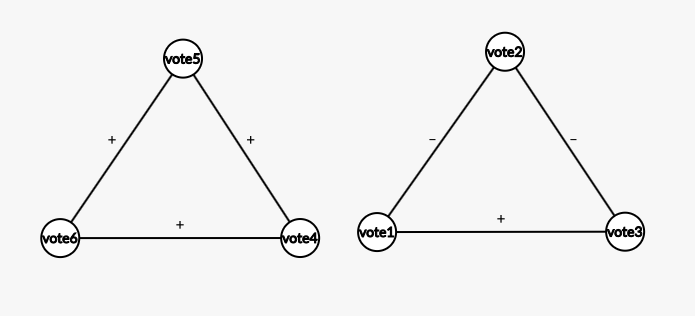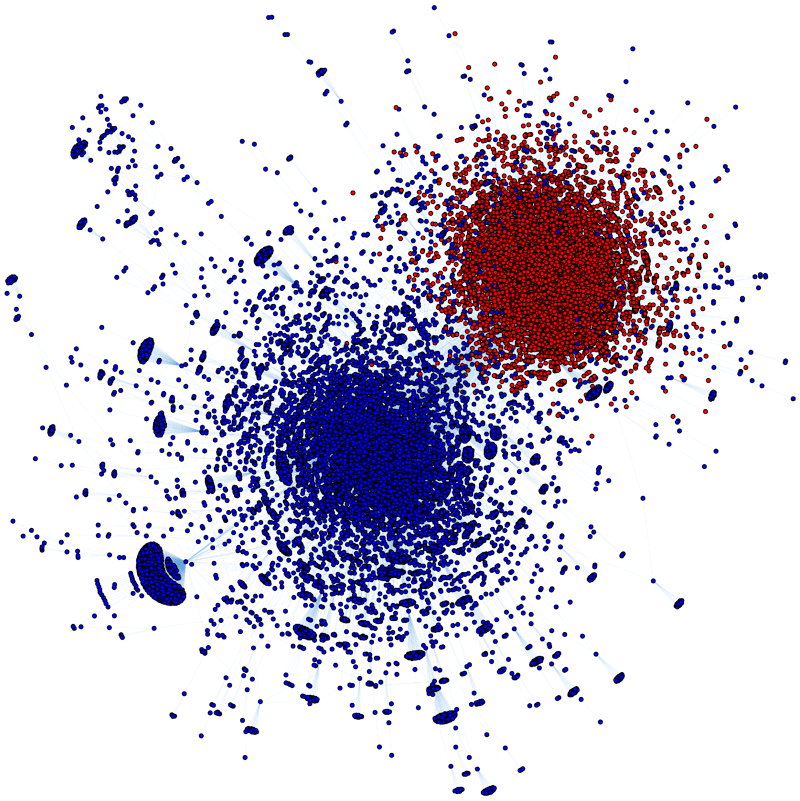Although we are in the middle of a global pandemic right now, but surprisingly these days the hot topic of news, social media, and websites is the US presidential election. Results of election of United States has always been really important not only to Americans, but also to the globe. Election of 2020 in particular, is even more controversial than the ones before. Many people, especially Non-Americans are looking for ways to predict the result of the election beforehand. With that being said and based on the result of national polls conducted across America, which is recently extracted and provided by the Non-American news company, BBC News, it is easy to see that Joe Biden is leading the election by 8 percent which is a significant number, but what does this number really explain and could you rely on it? In order to answer this question, we can use the power of graph theory and social networks to find our answer.
Most of the Americans have access to social media platforms and discuss the results of the election and who they might possibly vote for. Based on International Conference on Web Information Systems in 2014, research shows that what people say on social media platforms regarding elections turns out to be a good indicator of who they would vote for. The social platforms usually include polls which people do. One can imagine social platforms such as News channels and Twitter as a Social Network and convert it to an undirected graph. Each node represents a person in who contribute in a political discussion and has filled out a poll about who they might vote for, and edges represent that two persons vote in the election. It is easy to see that majority of people usually contribute in the election and vote for their party of interest. Therefore, in this network majority of people belong to a big connected component and there are people who are not legally eligible to vote or are not interested to vote at all which are isolated nodes in our graph.
Keeping that in mind, we tweak the graph explained above and we convert it to a signed graph. In this new graph, we only consider the people who vote in the election, and edges have + and – tags. + edges represent people who vote for the same party and – edges represent people who vote for opposite parties. This graph is complete because every node in this graph represents someone who is voting or considering voting, hence there is an edge between every node. Additionally, our graph is balanced. The reason is: (1) three negative edges is impossible because there are only two political parties here and (2) two positive edges and one negative doesn’t make sense because two people vote for the same party as a third person but at the same time they vote to opposite parties relative to each other which is counter intuitive. But it is easy to see that all positive and 1-positive 2-negative edge triangles are possible

Consider all this, since our graph is complete and balanced, by balance theorem we can divide this graph to two global coalitions which one represents Biden and the other Trump. The two coalitions can be considered as two disjoint sets. Hence, they don’t have any commen elements. Considering this we can divide the cardinality of each set (number of people in each coalition) by the total number of nodes in graph (Total people going/considering voting). This simple divisions give you the numbers that news represents as the result of polls for Trump and Biden, and what was explained is the whole story behind these simple two-digit numbers.

With all that being said, it would be fair to say these polls, assuming they are represented by a reputed source, explain potential voting behaviour that might happen on the election day. Now, as a CSCC46 student, with a little bit of knowledge about information/social network and graph theory, with a little combination of simple algebra, you can checkout out the history and results of these polls, which are happening since past few months, from well-known and well-reputed news companies to roughly predict the outcome of the election. After that, just go relax and have a cup of tea and just wait for the day of elections and its result! NO SURPRISES this time!
Sources: